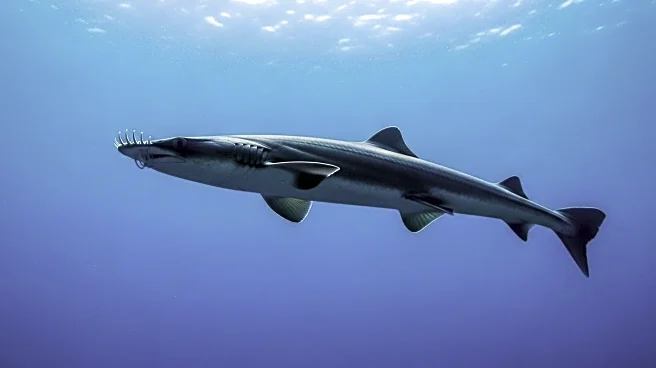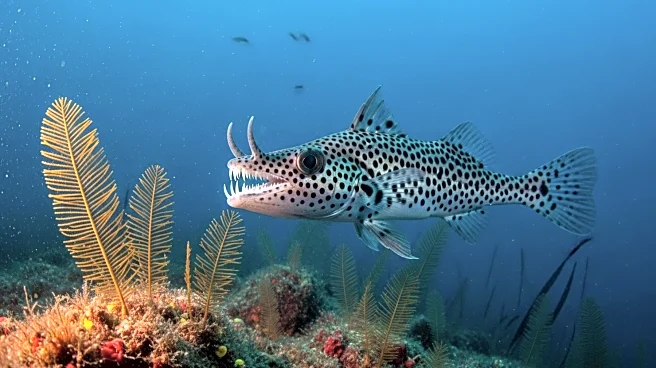What is the story about?
What's Happening?
Marine biologists have uncovered a fascinating adaptation in the spotted ratfish, a species abundant in the waters of Puget Sound, Washington. The male ratfish possesses a club-shaped appendage on its forehead, known as a tenaculum, which is lined with teeth. This appendage is used to cling to the female's pectoral fin during mating. The discovery challenges previous assumptions that teeth grow exclusively in mouths, highlighting the evolutionary flexibility of vertebrates. The research, published in the Proceedings of the National Academy of Sciences, involved micro-CT scans of 40 specimens, revealing rows of shark-like teeth embedded in the tenaculum. This finding provides new insights into the evolutionary biology of chimaeras, a category of cartilaginous fish that diverged from sharks about two million years ago.
Why It's Important?
The discovery of teeth outside the mouth in ratfish has significant implications for understanding vertebrate evolution. It challenges long-held assumptions about the development and placement of teeth, suggesting a broader evolutionary adaptability. This could lead to new insights into the genetic mechanisms behind tooth formation, potentially impacting fields such as paleontology and evolutionary biology. The study also highlights the unique adaptations of marine life, contributing to a deeper understanding of biodiversity and ecological interactions in ocean environments. Researchers and biologists stand to gain valuable knowledge that could inform conservation efforts and the study of marine ecosystems.
What's Next?
Further research is needed to explore the evolutionary origins and functions of the ratfish's forehead teeth. Scientists aim to investigate whether these teeth evolved primarily for mating or if they initially served a defensive purpose. Additionally, the presence of similar structures in female ratfish raises questions about their evolutionary role. Future studies may focus on genetic analysis and fossil records to uncover more about the development and historical significance of these unique appendages. The findings could inspire broader investigations into the evolutionary adaptations of other marine species.
Beyond the Headlines
The discovery of forehead teeth in ratfish opens up discussions on the ethical and ecological implications of studying deepsea creatures. Understanding these unique adaptations can shed light on the resilience and complexity of marine life, emphasizing the importance of preserving ocean biodiversity. The study also prompts a reevaluation of evolutionary biology principles, encouraging scientists to consider unconventional traits in the context of natural selection and adaptation.
AI Generated Content
Do you find this article useful?















